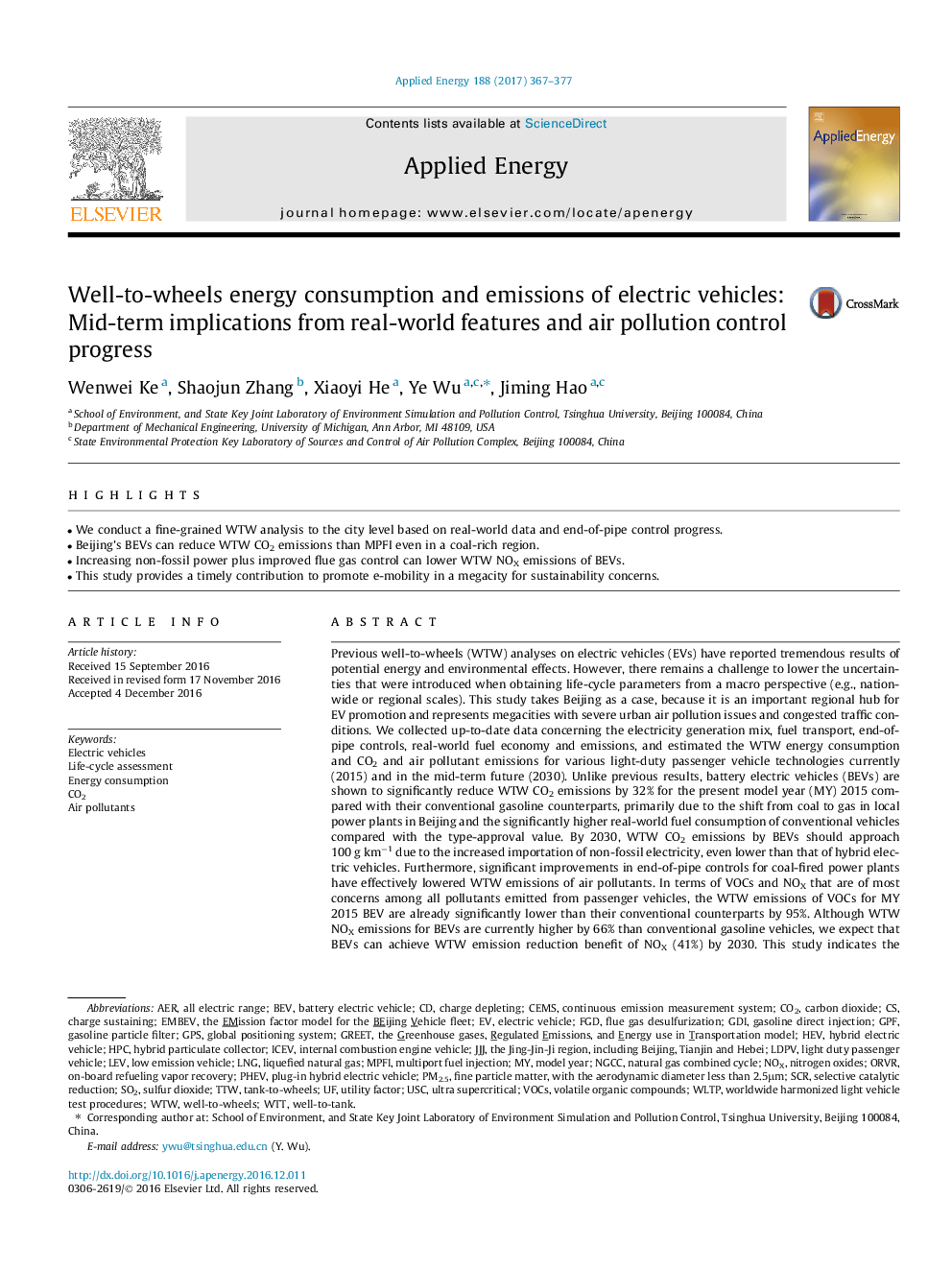| کد مقاله | کد نشریه | سال انتشار | مقاله انگلیسی | نسخه تمام متن |
|---|---|---|---|---|
| 4911140 | 1428102 | 2017 | 11 صفحه PDF | دانلود رایگان |
عنوان انگلیسی مقاله ISI
Well-to-wheels energy consumption and emissions of electric vehicles: Mid-term implications from real-world features and air pollution control progress
ترجمه فارسی عنوان
مصرف انرژی و انتشار وسایل نقلیه الکتریکی انرژی به چرخ: پیامدهای میان مدت از ویژگی های دنیای واقعی و پیشرفت کنترل آلودگی هوا
دانلود مقاله + سفارش ترجمه
دانلود مقاله ISI انگلیسی
رایگان برای ایرانیان
کلمات کلیدی
HEVModel yearWTTTTWLow emission vehicleWTWCEMSWLTPICEVPHEVGPFBEVLEVUSCNGCCFGDHPCGDIVOCsLNGPM2.5AER - AIRNOx - NOXAir pollutants - آلاینده های هواLife-cycle assessment - ارزیابی چرخه حیاتNitrogen oxides - اکسید نیتروژنPlug-in Hybrid Electric Vehicle - برق خودرو هیبریدیWell-to-wheels - به خوبی به چرخ هاVolatile organic compounds - ترکیبات آلی فرارgasoline direct injection - تزریق مستقیم بنزینWell-to-tank - خوب به مخزنHybrid electric vehicle - خودرو الکتریکی هیبریدیInternal Combustion Engine Vehicle - خودرو موتور احتراق داخلیElectric Vehicle - خودروالکتریکی Electric vehicles - خودروی برقی یا خودروی الکتریکیSO2 - دی اکسید گوگردSulfur dioxide - دی اکسید گوگردCarbon dioxide - دیاکسید کربنGPS - سامانه موقعیتیاب جهانیGREET - سلامFlue gas desulfurization - سولفوریزاسیون گاز دودکشGlobal Positioning System - سیستم موقعیت یاب جهانیUtility factor - عامل سودمندEnergy consumption - مصرف انرژیBattery electric vehicle - وسیله نقلیه الکتریکی باتریnatural gas combined cycle - چرخه ترکیب گاز طبیعیSelective catalytic reduction - کاهش کاتالیزوری انتخابی یا کاهش کاتالیستی انتخابیCO2 - کربن دیاکسیدLiquefied natural gas - گاز طبیعی مایعSCR - یکسوساز کنترلشده با سیلیکون
موضوعات مرتبط
مهندسی و علوم پایه
مهندسی انرژی
مهندسی انرژی و فناوری های برق
چکیده انگلیسی
Previous well-to-wheels (WTW) analyses on electric vehicles (EVs) have reported tremendous results of potential energy and environmental effects. However, there remains a challenge to lower the uncertainties that were introduced when obtaining life-cycle parameters from a macro perspective (e.g., nationwide or regional scales). This study takes Beijing as a case, because it is an important regional hub for EV promotion and represents megacities with severe urban air pollution issues and congested traffic conditions. We collected up-to-date data concerning the electricity generation mix, fuel transport, end-of-pipe controls, real-world fuel economy and emissions, and estimated the WTW energy consumption and CO2 and air pollutant emissions for various light-duty passenger vehicle technologies currently (2015) and in the mid-term future (2030). Unlike previous results, battery electric vehicles (BEVs) are shown to significantly reduce WTW CO2 emissions by 32% for the present model year (MY) 2015 compared with their conventional gasoline counterparts, primarily due to the shift from coal to gas in local power plants in Beijing and the significantly higher real-world fuel consumption of conventional vehicles compared with the type-approval value. By 2030, WTW CO2 emissions by BEVs should approach 100 g kmâ1 due to the increased importation of non-fossil electricity, even lower than that of hybrid electric vehicles. Furthermore, significant improvements in end-of-pipe controls for coal-fired power plants have effectively lowered WTW emissions of air pollutants. In terms of VOCs and NOX that are of most concerns among all pollutants emitted from passenger vehicles, the WTW emissions of VOCs for MY 2015 BEV are already significantly lower than their conventional counterparts by 95%. Although WTW NOX emissions for BEVs are currently higher by 66% than conventional gasoline vehicles, we expect that BEVs can achieve WTW emission reduction benefit of NOX (41%) by 2030. This study indicates the significance of fine-grained and real-world features when assessing the WTW energy and environmental effects of EVs.
ناشر
Database: Elsevier - ScienceDirect (ساینس دایرکت)
Journal: Applied Energy - Volume 188, 15 February 2017, Pages 367-377
Journal: Applied Energy - Volume 188, 15 February 2017, Pages 367-377
نویسندگان
Wenwei Ke, Shaojun Zhang, Xiaoyi He, Ye Wu, Jiming Hao,
